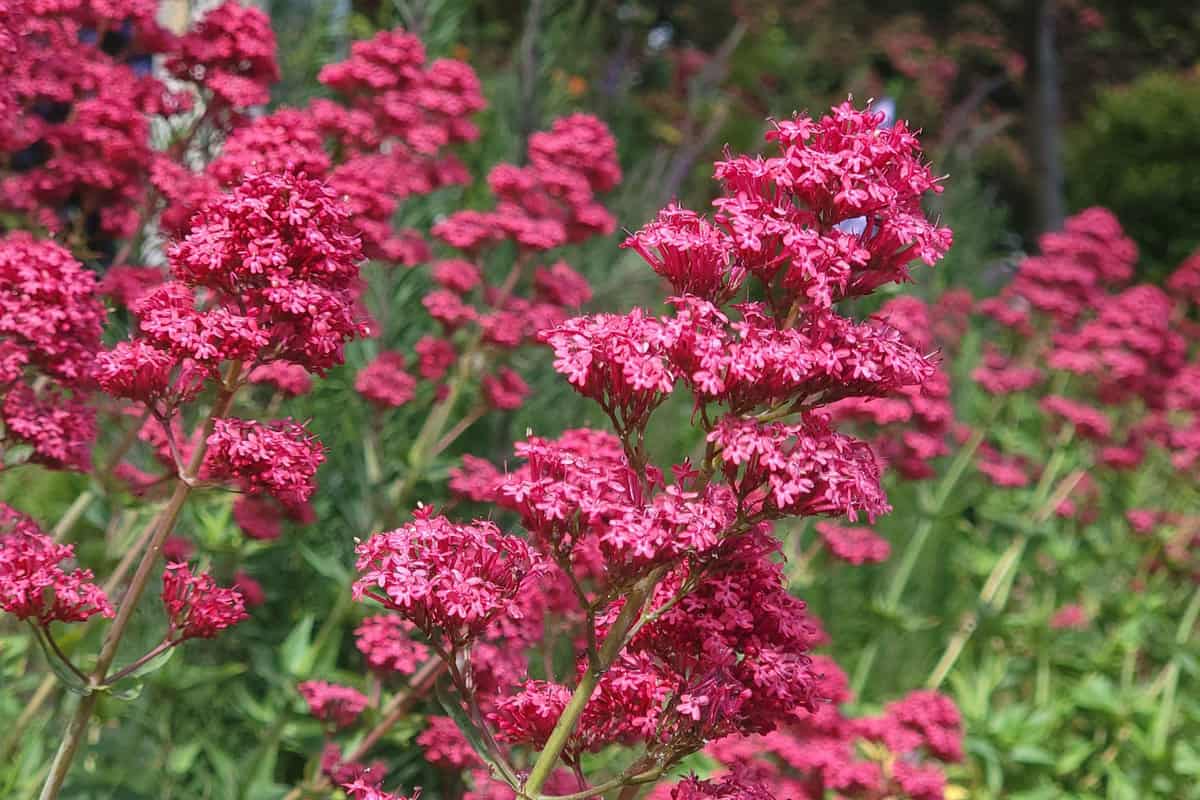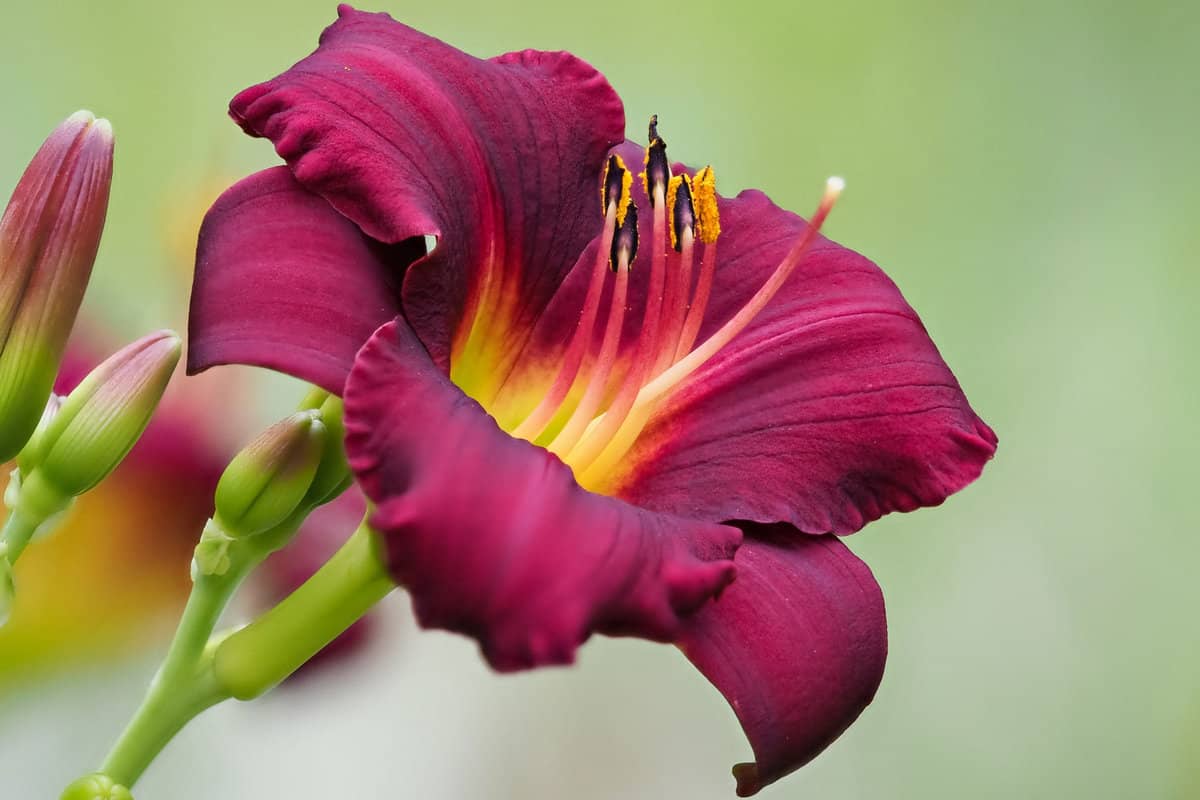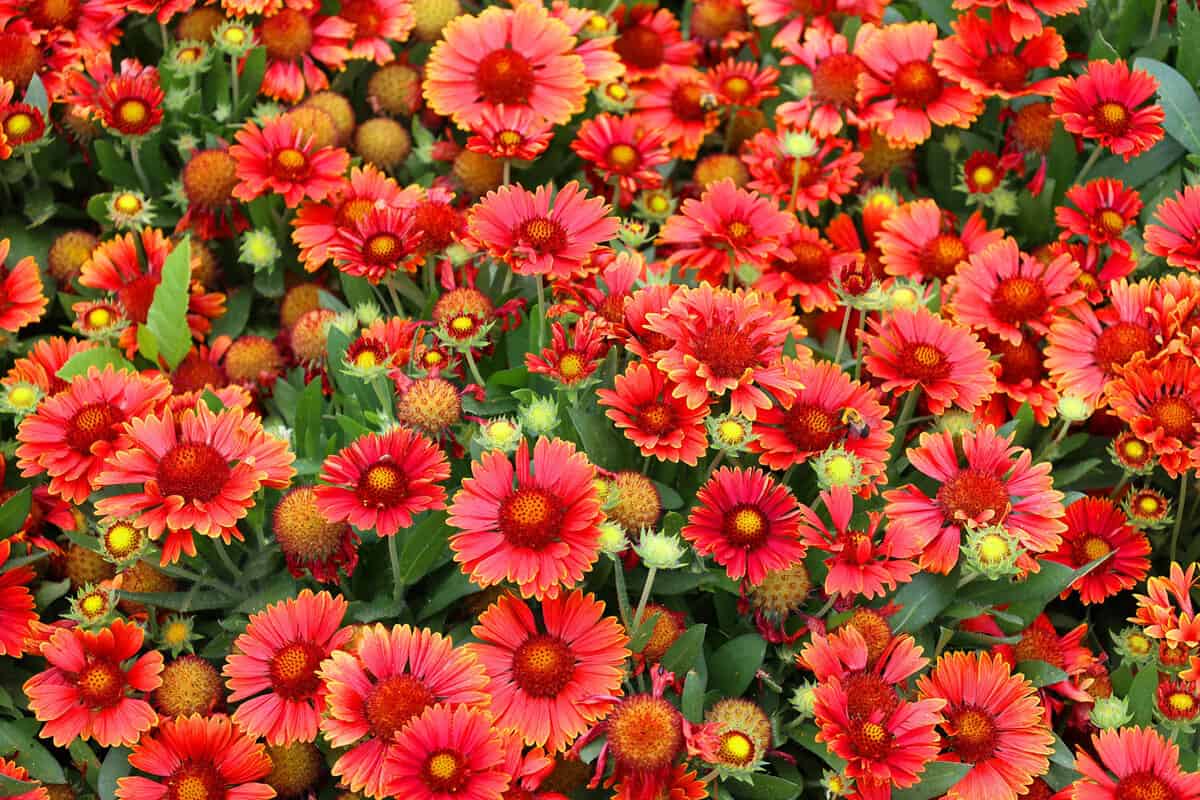There's something inexplicably magical about the sight of red flowers adorning gardens, painting a vibrant canvas against the backdrop of summer's sunny days and sultry evenings.
Yet, imagine the enchantment of a bloom that doesn't fleetingly come and go but lasts all summer long - this is the allure of red perennials.

From bold, fiery tones to softer, subtle hues, these red perennials will not only enrich your gardens but also uplift your spirits.
These beauties will keep the magic of summer alive from the moment the first bud breaks until the last leaves of autumn begin to fall.
So immerse yourself in a world of enduring beauty and resilience. Check out these fifteen different gorgeous summer-blooming red perennials!
15 Red Perennials That Bloom All Summer
Let's look at each of these scrumptious flowers to see which ones might be right for your garden.
1. Dianthus
From a genus of about 300 species, Dianthus are mostly perennials, though some are biennial or annual.

Perennial forms—also called pinks—are evergreen or semi-evergreen. The name is derived from the petals' frilly edges, which look like they were cut with pinking shears. Sweet William and carnations are also types of Dianthus.
These flowers form mounded shapes and grow in Zones 3-9, depending upon the variety.
They like moderate, six hours of sunlight but can tolerate partial shade though the blooms may not be as abundant.
Plant them in the spring or fall in rich, well-drained soil, and you'll enjoy blooms throughout the summer.
2. Roses
Rose (Rosacea) is a woody perennial flowering plant that comes in hundreds of variations.

Technically shrubs, roses come back every year, and rich red roses like red drift or knockout roses will give you masses of gorgeous blooms every year.
They thrive in full sun but can tolerate partial shade. Generally, roses like morning moisture, good air circulation, and well-drained soil. Roses do well with some help from fertilizers.
For more on roses, check out our post here: 11 Types of Knock Out Roses.
3. Valerian
Valerian is native to Europe and Asia but grows in the US as well. Valeriana Officinalis or garden heliotrope is known for its medicinal properties as well as its flowers.

Historically it was used to treat insomnia, migraine, fatigue, and stomach cramps.
Now it's used for insomnia, anxiety, depression, premenstrual syndrome (PMS), menopause symptoms, and headaches.
To grow valerian in your garden, it needs light, well-drained soil, and full sun to partial shade. It's cold-hardy and can be grown from seed or started plants.
4. Yarrow
Yarrow (Achillea millefolium) is a carefree pollinator, perfect for all types of perennial gardens.

The flowers may be yellow, red, pink, or any shade in between, so if you love it, you can have it in multiple colors.
Yarrow likes full sun, which encourages compact growth and flowers. In the partial sun, yarrow will grow leggy.
Yarrow does best in well-drained soil. It thrives in hot, dry conditions and doesn't like wet conditions at all. Space your plants a foot or two apart as they like to spread out.
5. Salvia
Salvia (also known as sage) or Lamiaceae is a gorgeous perennial. They're super for cutting and loved by bees and butterflies.

With a long blooming season, they'll bring beauty to your garden all summer long.
Salvia is heat- and drought-tolerant, making it excellent for the summer garden. They grow 18-inches to 5-feet tall, depending on the variety, and are deer and rabbit resistant.
Salvia likes full sun and well-drained soil. They grow in containers as well as garden beds. Plant them in groupings of three or more plants for the best effect.
6. Daylily
Daylilies belong to the genus Hemerocallis and are not true lilies. Their name comprises two parts: hemera, meaning day, and kallos, meaning beauty.

Each flower lasts only one day, but if planted in groupings, they produce many beautiful blooms.
Daylilies do best in full sun but will tolerate some shade. They like highly acidic, moist soil and should be planted with plenty of space so that they do not have to compete with other plants for nutrients.
There are many colors and varieties, including bold reds, like the photo above.
7. Bergenia
Bergenia (Bergenia) is a lovely evergreen ground cover known as much for its elephant ear type foliage as well as its flowers. It likes well-drained, dry soil and sunny locations.

Its flowers are deep pink and almost red, but interestingly enough, the foliage turns reddish-purple in the fall, adding color to your perennial bed.
Plant it along with your tulips and daffodils for a gorgeous mix. Grows in USDA Zones 4-10.
8. Blanketflower
This cool-season perennial is a relative of the sunflower. Blanketflower is native to most Western states, the upper Great Plains, around the Great Lakes, and in portions of New England.

It needs at least six hours of sunlight per day to flower well, and if you're good about deadheading the blooms, you should have flowers from mid-June until the first frost.
These are a popular choice for low-water gardens as blanket flower thrives in low moisture conditions.
9. Angelonia
Angelonia (angelonia), also called summer snapdragon, produces numerous flowers. They make excellent cut flowers for vases and have a gorgeous scent.

These flowers come in several colors, including a deep, almost-red pink.
For the best show of flowers, plant angelonia in late spring in a spot that receives full sun and has moist, well-drained soil.
Once established, these plants can be quite drought-tolerant, especially if the soil is rich in organic material and added mulch.
10. Ice Plant
Ice plant (Delosperma) is a hardy succulent ground cover that produces low-blooming flowers.

It's not called ice flower because of a cold-weather preference, but because both the leaves and flowers tend to shimmer in the sunlight due to the tiny hairs that cover the foliage.
They bloom in spring but can bloom again throughout the summer in sunny spots. These gorgeous plants look perfect in a rock garden where you need a low ground cover.
11. Primrose
Primrose (Primula vulgaris) are perennials known for their bright, beautiful flowers.

These are low-growing plants that form neat clumps of about 12" tall and wide.
They need well-drained, moist, fertile soils that imitate the woodland areas where they grow in the wild.
They grow best in partial shade and do better in places with cooler summers. In hotter climates, they are more of a spring perennial.
12. Red Bee Balm
Bee Balm, also known as wild bergamot, is a very easy perennial to grow. It's a major pollinator attractor so perfect for a bee and butterfly garden.

It thrives in full sunshine and needs some space; otherwise, it's prone to powdery mildew on its leaves.
Interestingly enough, Native Americans and early colonists used bee balm leaves and flowers to make a variety of medicinal salves and drinks, and it's still planted for its herbal qualities as well as its beauty.
13. Red Chiffon Coreopsis
Coreopsis (Asteraceae), also called tickseed, produces masses of flowers through the early summer.

They are hardy from Zones 4-9. Plant coreopsis to receive at least six to eight hours of direct sun a day.
Coreopsis prefers rich, well-drained soil but also does okay in poorer, drier conditions.
To promote additional blooms, deadhead the plants by clipping away faded flowers. Water whenever the soil feels dry to the touch.
Coreopsis is relatively deer resistant and works well in fresh-cut arrangements making this a great addition to your perennial garden.
14. Red Verbena
Verbena or vervain (verbenus) are long-blooming annual or perennial heat-tolerant flowers and have an extremely long bloom season.

Verbenas bloom from spring until close to frost if trimmed back once or twice in mid-summer.
Verbenas require a location that gets full sun throughout the day, and they like well-drained soil.
They will not tolerate overcrowding, shade, or soil that stays overly moist.
15. Masterwort
Masterwort (Astrantia major) prefers part shade and rich, medium to wet soil. It grows best in soil that is not allowed to dry out and in areas with cooler summer nights.

This is a perfect addition to a hosta bed or other shade and moisture-loving area of your garden.
It will bloom continuously throughout the summer and produces a lovely sweet scent.
Additional Reading
If you enjoyed this post on red perennials, please visit a few other posts here at Gardentabs.com. The ones below may be of interest to you:
15 Short Perennials That Bloom All Summer
The 15 Best Perennials For a Vertical Garden
Are you on Pinterest? You can use the image below to help us pin this post!

